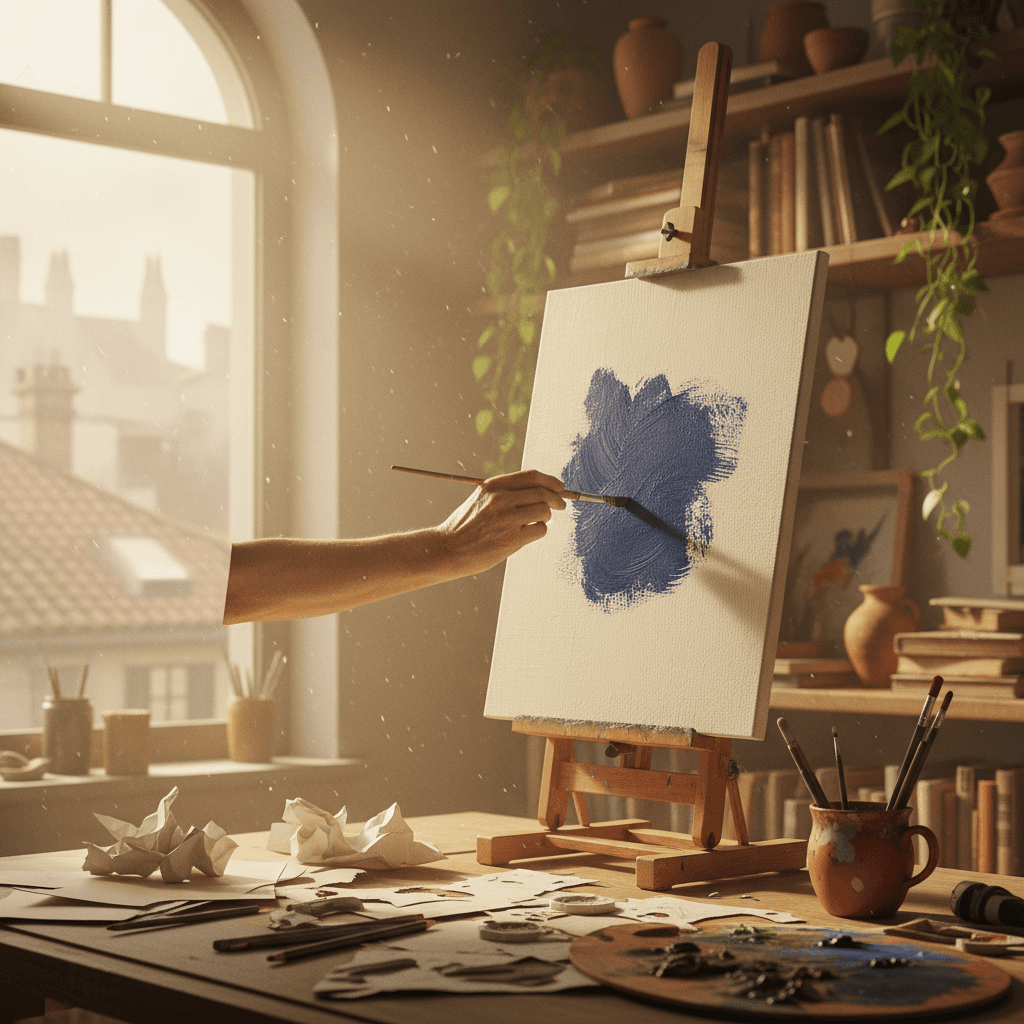Create Now: Reject Perfection’s Endless Waiting Room

Refuse the waiting room of perfection; begin creating from the imperfect present — Virginia Woolf
The Urgency of Beginning
This line calls us to abandon the fantasy of flawless conditions and meet the page as it is. By refusing the waiting room of perfection, we reclaim time—our most limited resource—and allow ideas to take shape in the unruly now. In Woolf’s modernist milieu, the present was not a staging area but the stage itself, a live performance where meaning emerged amid flux.
Woolf’s Practice and Material Realities
A Room of One’s Own (1929) argues that creation requires space and income, yet Woolf also models how to create within constraints. Her diaries reveal a steady rhythm of drafting, doubting, and returning—work done in imperfect health and under domestic interruptions. Rather than wait for pristine certainty, she shaped conditions as she worked, showing that practice itself can build the room we need.
Fiction that Honors the Imperfect Present
In Mrs Dalloway (1925), a single June day becomes enough; the novel’s stream of consciousness turns interruptions—bells, parties, chance meetings—into structure. Likewise, To the Lighthouse (1927) lets Lily Briscoe finish her painting years later by trusting partial memory and present sensation. These narratives insist that the fragmentary moment holds sufficient truth if we begin within it.
Learning by Doing: The Hogarth Experiment
Woolf and Leonard Woolf founded the Hogarth Press in their home, hand-setting early works like Kew Gardens (1919). The venture’s amateur beginnings—ink smudges, uneven type, trial-and-error—became a pedagogy of action. Printing as they learned, they proved that imperfect tools can still produce enduring art, a case study in shipping work before it looks immaculate.
Why Imperfection Works: Research and Craft Wisdom
Creativity studies reinforce this ethos. Teresa Amabile and Steven Kramer’s The Progress Principle (2011) shows that small, imperfect wins sustain motivation. Carl Rogers’ On Becoming a Person (1961) frames growth as process rather than fixed state. Echoing this, Anne Lamott’s Bird by Bird (1994) champions the liberating “shitty first draft,” a practical counterspell to perfection’s paralysis.
Methods to Start Before You Feel Ready
To operationalize the stance, creators lean on light-lift rituals: zero-drafts that aim for volume over polish; time-boxing via the Pomodoro Technique (Francesco Cirillo, 1980s) to lower the threshold of action; and morning pages from Julia Cameron’s The Artist’s Way (1992) to clear noise. Each method values momentum, trusting that refinement follows initiation.
The Ethical Stakes of Beginning
Finally, refusing perfection also resists gatekeeping. A Room of One’s Own insists that voices excluded by class and gender cannot wait for ideal permission structures. Likewise today, sharing work-in-progress invites community, redistributes authority, and keeps culture alive. Start now, the line urges, because the present—however imperfect—is where art enters the world.